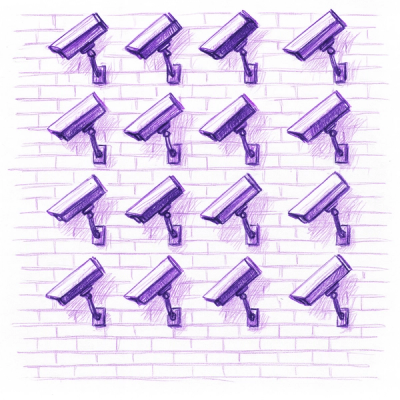Pointer3000
A simple little utility that makes it easy to work with values calculated from the pointer's location relative to one or multiple defined points. 🙋🏼
🍒 VISIT THE PROJECT (MINI DEMO) WEBSITE
Why?
I experiment a lot with interactive graphics and interaction in general, and have found that I often have to calculate this and that, particularly the distance and angle from (a) specific point(s). I decided to make this little utility so I can just plop it in and start trying things out. This is meant to be used in compositions with just regular DOM elements– the constraint of what can be done with just a 'regular' page I find to be a very welcome creative challenge.
While the output is very 'basic', I found that what can be done with them when used to manipulate things are endless. I hope you find this stirring your creativity and imagination. Lots of possibilities!
💅🏾 THE PROJECT SITE IS A MINI DEMO
More demos coming soon (mocking 3d, AppleTV rotating cards, etc)
How?
Simply call Pointer3000. This will create a global variable Pointer3k which contains points. Values are updated onMouseMove by default (see available settings below). Download the script or npm install pointer3000.
Pointer3k();
While the utility registers events on mousemove by default, you can use values via requestAnimationFrame so you don't have to register another mousemove listener to update the view.
If initialised without arguments it will simply register the center of the viewport as its one and only reference point. The default name of this auto-created point is pointA. If you do a console.log(Pointer3k('pointA') after initialisation, you will find that a point object contains the following data:
pointA: {
cx: 640,
cy: 333,
deg: 43.42633594589745,
dist: 426.8480408763756
rad: 0.7579325443330766,
x: 187
y: 177
}

But you probably want to define specific points of reference, have multiple and even name them for convenience, so you'd want to initialize it like so:
Pointer3k({
points: {
aNicelyNamedPoint: {
cx: 200,
cy: 200
},
anotherPoint: {
cx: 'center',
cy: 'center'
},
goCrazy: {
cx: 450
cy: 620
}
},
initialPos: { pageX: 200, pageY: 200 },
listener: 'mousemove',
console: true
});
So how do you get a specific point's particular value? You just do: Pointer3k(pointName).propertyKey
var distanceFromReference = Pointer3k('aNicelyNamedPoint').dist;
var angleInDegrees = Pointer3k('aNicelyNamedPoint').deg;
If you want to pause updating values (basically just having an empty mousemove listener, performance gains or what have you) e.g. you only want values to be updated if a button has been clicked, then you use:
Pointer3k(boolean);
var updatePointer = false;
button.addEventListener(function() {
updatePointer = !updatePointer;
Pointer3k(updatePointer);
});
You can also access all points via Pointer3k.points.
Notes
- If manipulating DOM elements, it is still best to use transforms as they are way more performant than manipulating e.g. width and height.
- If you are going to be doing something relatively complex graphic wise then I think you should be looking at canvas or other drawing libraries. Those would be more performant, and have more math methods at your disposal. e.g. paperJS, raphael, svg.js
- Having
console: true or having inspector open (as you already know) will reduce performance as it will be updating values, recording timelines, highlighting updated DOM elements what have you.
Plans
- More values e.g. adjacent, opposite and corresponding angles
- point relative to a parent element
- any suggestions?
Say Hi!
Please do. If you have any comments or suggestions, i'd love to hear them. This utility is completely free but if you have used it for something cool please do let me know, let me see what you've made! Drop me a line at ezekielaquino@gmail.com or via @the_ezekiel or Share this on Twitter!
P.S. Follow me on twitter!
License
This project is licensed under the MIT License - see the LICENSE.md file for details




